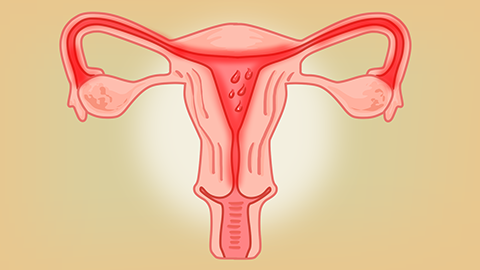What are the symptoms and risks of uterine polyps?
Generally, the symptoms of uterine polyps include abnormal uterine bleeding, prolonged menstrual periods, increased menstrual flow, abnormal vaginal discharge, and postmenopausal bleeding. Potential complications include impaired fertility, development of anemia, increased risk of infection, risk of malignancy, and recurrent bleeding. If abnormalities occur, timely medical consultation is recommended. Detailed explanations are as follows:

I. Symptoms
1. Abnormal uterine bleeding: Polyps may irritate the endometrium, causing irregular shedding and resulting in vaginal bleeding outside the menstrual period or bleeding after sexual intercourse. The timing and amount of bleeding may vary.
2. Prolonged menstrual periods: Polyps may interfere with normal uterine contractions and endometrial repair, leading to longer menstrual duration. A period that originally lasted 3–7 days might extend beyond 10 days, often accompanied by spotting.
3. Increased menstrual flow: Polyps may occupy space within the uterine cavity, impeding the smooth discharge of menstrual blood or increasing the relative surface area of the endometrium, resulting in significantly heavier menstrual bleeding, sometimes with blood clots.
4. Abnormal vaginal discharge: When the surface of a polyp exudes fluid or is accompanied by mild infection, vaginal discharge may increase in volume and become thicker. In some cases, blood streaks may appear in the discharge.
5. Postmenopausal bleeding: Menopausal women with uterine polyps may experience vaginal bleeding due to ulceration or irritation of surrounding endometrial tissue by the polyps, which is a typical abnormal manifestation.
II. Complications
1. Impaired fertility: Polyps located within the uterine cavity may obstruct sperm entry or interfere with implantation of the fertilized egg, reducing the chance of conception. In pregnant women, they may also increase the risk of miscarriage.
2. Development of anemia: Long-term abnormal bleeding or excessive menstrual flow can lead to significant blood loss and decreased hemoglobin levels, resulting in anemia, manifested as fatigue, dizziness, and pallor.
3. Increased risk of infection: Abnormal bleeding can alter the vaginal environment or cause surface damage to the polyps, making them susceptible to bacterial invasion and leading to infectious conditions such as endometritis, which can worsen physical discomfort.
4. Risk of malignant transformation: Although the probability is low, certain uterine polyps may undergo malignant transformation, especially large or rapidly growing polyps. Malignant changes can threaten health and increase treatment difficulty.
5. Recurrent bleeding: If polyps are not treated promptly, abnormal bleeding may recur, affecting normal life and potentially causing psychological stress due to long-term bleeding, thus reducing quality of life.
After identifying symptoms related to uterine polyps, timely medical consultation is necessary to determine the size, number, and nature of the polyps. In daily life, maintaining external genital hygiene, avoiding excessive fatigue, maintaining regular作息 habits, and reducing the risk of gynecological inflammation are important. If diagnosed with polyps, follow medical advice to choose observation, medication, or surgical treatment, and undergo regular follow-up to prevent recurrence.




